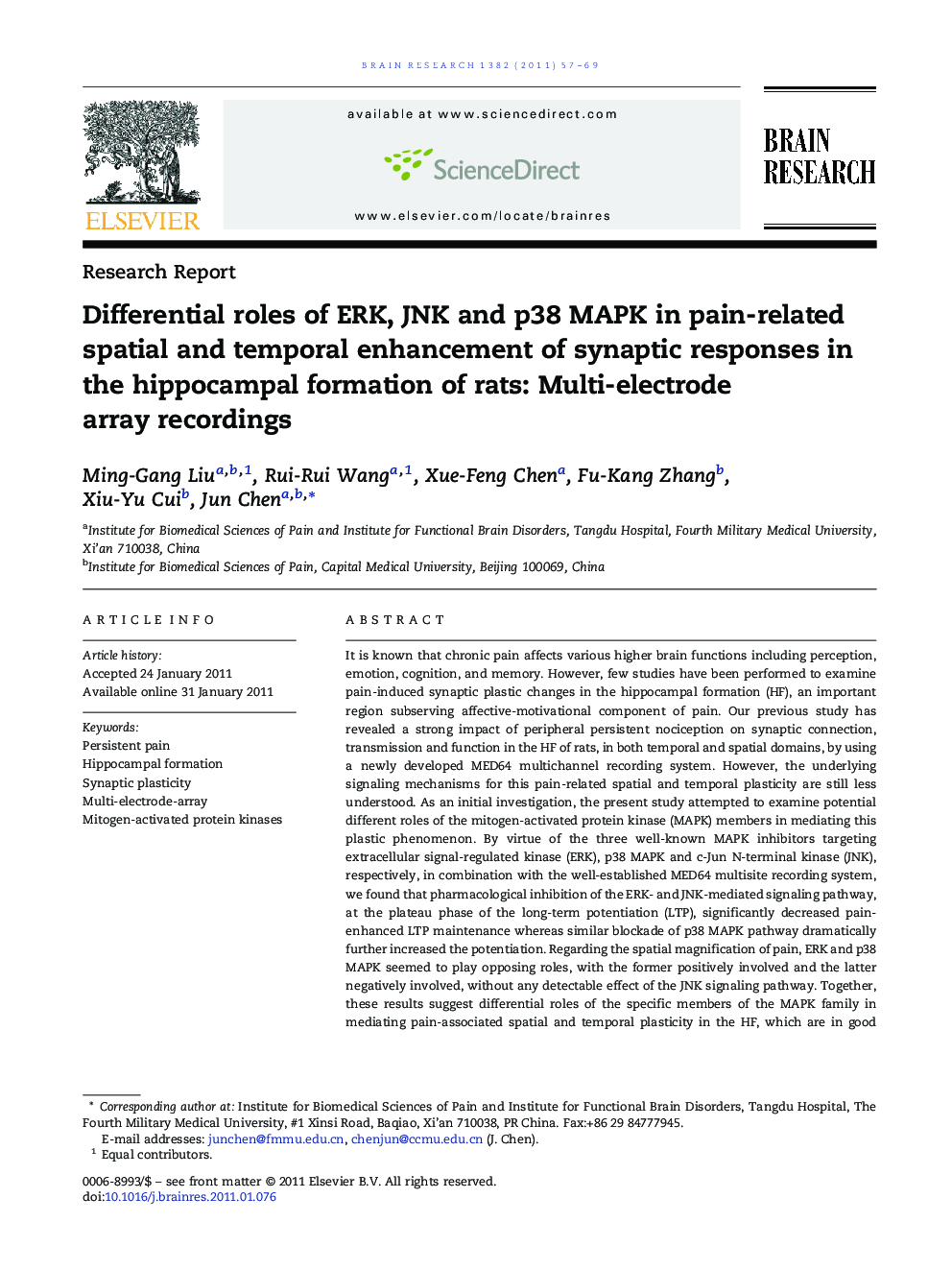| Article ID | Journal | Published Year | Pages | File Type |
|---|---|---|---|---|
| 6265059 | Brain Research | 2011 | 13 Pages |
It is known that chronic pain affects various higher brain functions including perception, emotion, cognition, and memory. However, few studies have been performed to examine pain-induced synaptic plastic changes in the hippocampal formation (HF), an important region subserving affective-motivational component of pain. Our previous study has revealed a strong impact of peripheral persistent nociception on synaptic connection, transmission and function in the HF of rats, in both temporal and spatial domains, by using a newly developed MED64 multichannel recording system. However, the underlying signaling mechanisms for this pain-related spatial and temporal plasticity are still less understood. As an initial investigation, the present study attempted to examine potential different roles of the mitogen-activated protein kinase (MAPK) members in mediating this plastic phenomenon. By virtue of the three well-known MAPK inhibitors targeting extracellular signal-regulated kinase (ERK), p38 MAPK and c-Jun N-terminal kinase (JNK), respectively, in combination with the well-established MED64 multisite recording system, we found that pharmacological inhibition of the ERK- and JNK-mediated signaling pathway, at the plateau phase of the long-term potentiation (LTP), significantly decreased pain-enhanced LTP maintenance whereas similar blockade of p38 MAPK pathway dramatically further increased the potentiation. Regarding the spatial magnification of pain, ERK and p38 MAPK seemed to play opposing roles, with the former positively involved and the latter negatively involved, without any detectable effect of the JNK signaling pathway. Together, these results suggest differential roles of the specific members of the MAPK family in mediating pain-associated spatial and temporal plasticity in the HF, which are in good agreement with previous observations. In addition, a possible mechanistic separation between spatial and temporal magnification of pain is also indicated in this study.
Research highlights for the articleâºERK plays positive roles in pain-related spatial and temporal synaptic plasticity in the hippocampal formation âºJNK is mainly involved in pain-evoked temporal plasticity âºp38 MAPK negatively modulates spatial and temporal magnification of pain âºDifferent mechanisms underlie pain-related spatial and temporal plasticity
